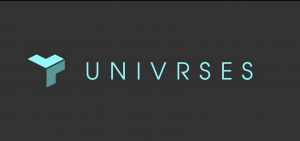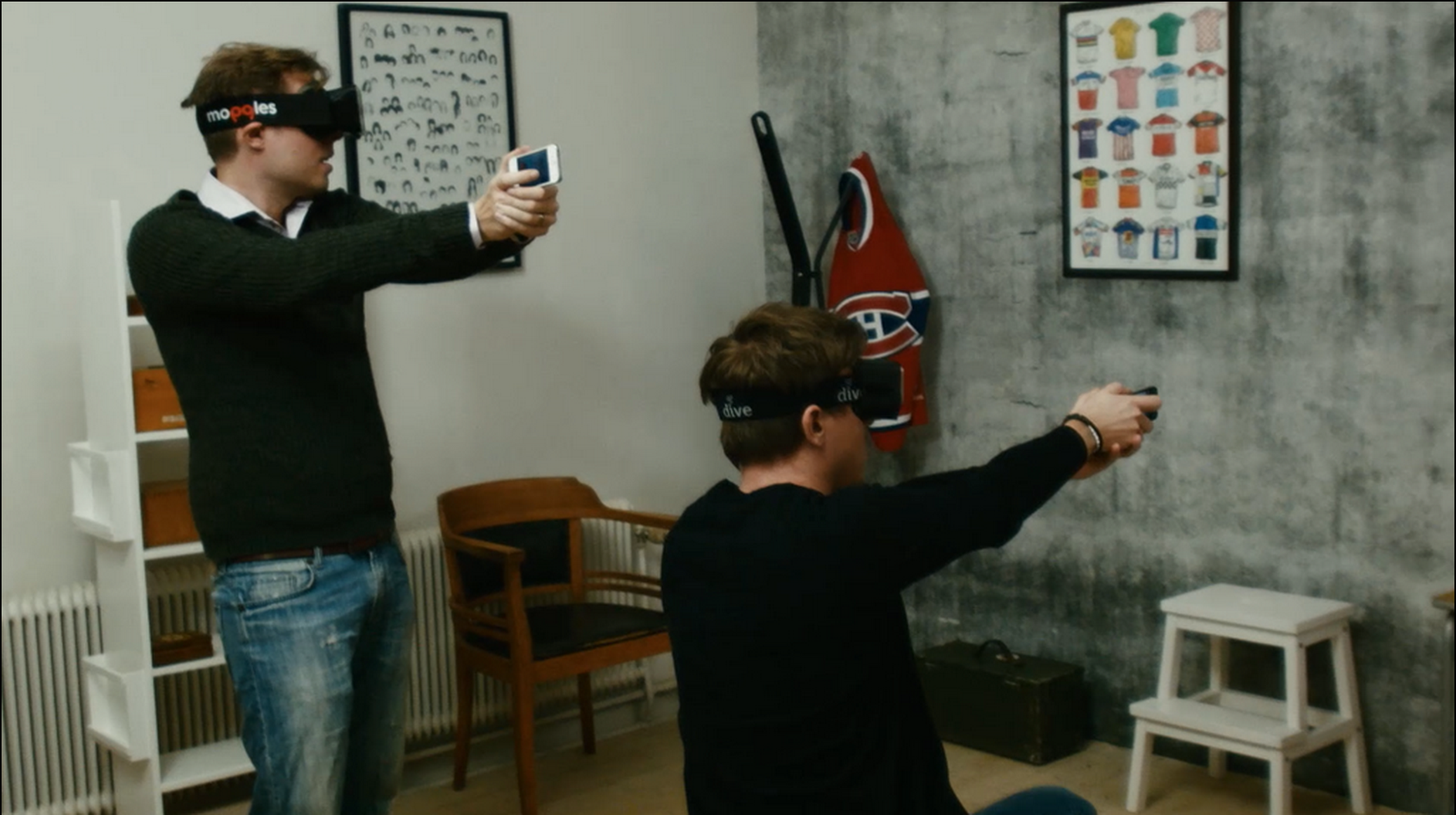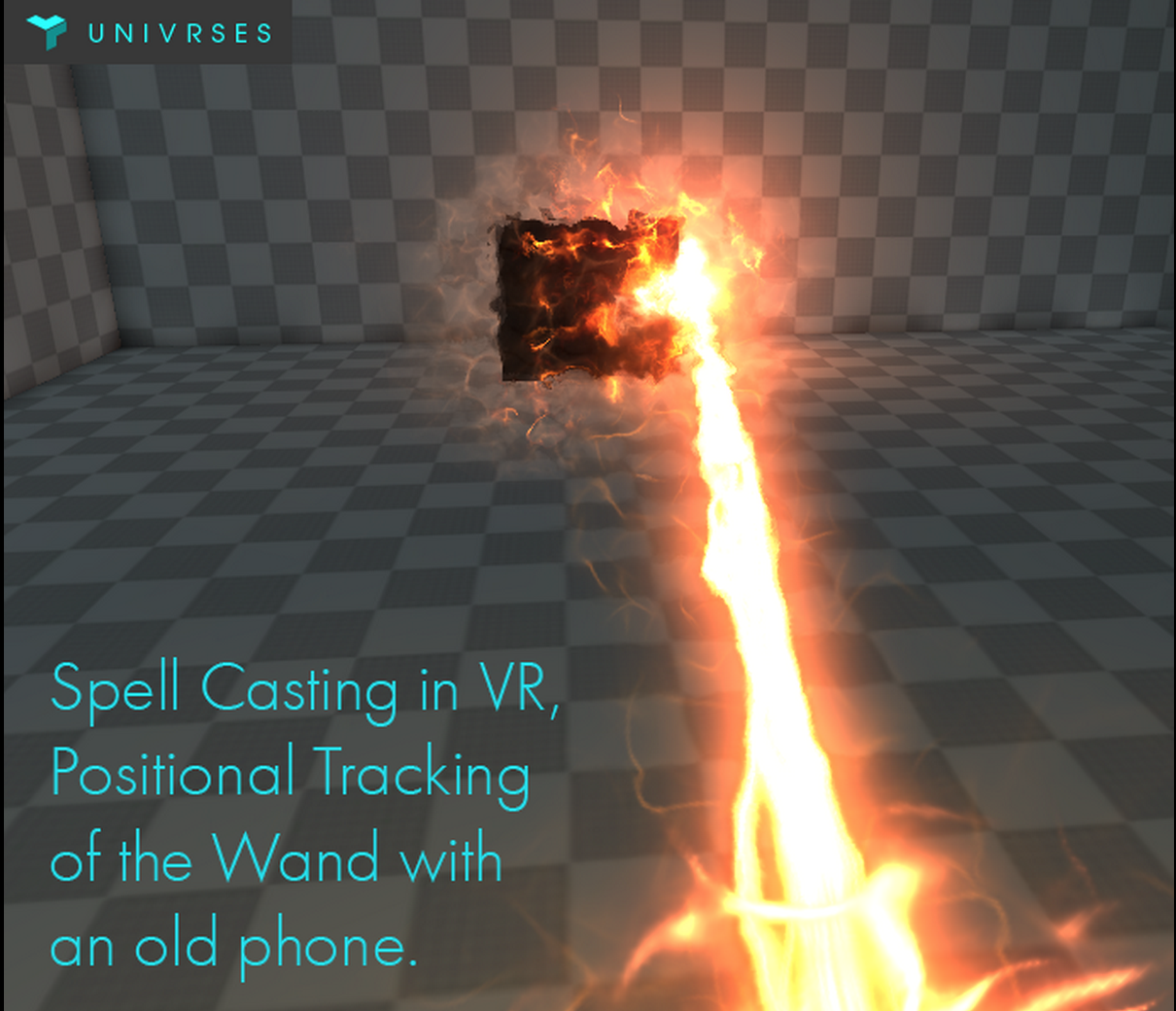Currently, mobile VR is the only “consumer” VR available, be it with the Samsung Gear VR, the Google Cardboard, the Durovis Dive, or any of the plethora of other mobile phone based VR solutions. However, the mobile experience comes with a caveat, the lack of positional tracking render the devices far less immersive than their desktop-based counterparts. Univrses, a small VR company out of Sweden, is looking to change that by not only bringing positional tracking to VR but full walking movement to mobile VR using a software solution rooted in robotics.
How it works
The company’s software utilizes a robotics technology called monocular SLAM, which  utilizes a set of algorithms designed to detect depth and objects using a single camera – in this case the camera on the smartphone. Simultaneous localization and mapping (SLAM) is a process through which the environment is simultaneously mapped while keeping track of the objects in it. There are a number of different algorithmic solutions for this, including the ones used by The 13th Lab, which was recently acquired by Oculus. However, Ricky Helgesson – Univrses’ founder, says their solution is novel and tailored for the CPU restraints of a mobile device. “The thing we are doing is that we are doing the mapping and tracking part before you play the game because we want to make sure that there’s as much CPU as possible while you play,” says Helgesson. Helgesson calls these maps “playgrounds,” because they are a space that can become whatever the player wants it to be.
utilizes a set of algorithms designed to detect depth and objects using a single camera – in this case the camera on the smartphone. Simultaneous localization and mapping (SLAM) is a process through which the environment is simultaneously mapped while keeping track of the objects in it. There are a number of different algorithmic solutions for this, including the ones used by The 13th Lab, which was recently acquired by Oculus. However, Ricky Helgesson – Univrses’ founder, says their solution is novel and tailored for the CPU restraints of a mobile device. “The thing we are doing is that we are doing the mapping and tracking part before you play the game because we want to make sure that there’s as much CPU as possible while you play,” says Helgesson. Helgesson calls these maps “playgrounds,” because they are a space that can become whatever the player wants it to be.
The system works with a simple set up, first you set up your point cloud by mapping the room around you with your smartphone camera, then you go through a localization step, which involves standing straight and then taking a one meter step forward, left and right. “Using these three camera angles we are able to calculate how long a meter is and calculate where forward is and where up is, which is the basic parameters we need.” From there the last step is to go around the room and mark the boundaries. This is done by taking your phone around the room and tapping when you reach a corner or boundary. These bounds are represented in some way in the virtual world that makes sense, be it a cliff or some kind of magical aura. During this step, you also mark any furniture that may be in the room, which will appear as “some kind of polygon” in the game, helping you avoid tripping and falling over the sofa. According to Helgesson, the setup for this process for a typical living room takes “maybe up to 10 minutes.”

Once the playground setup is complete, players can upload their rooms into a cloud server where they are stored for later access, this means that unless you move your furniture around a lot, you can return to your playground at anytime without the setup. Other players can also inhabit the space, so if you have a friend over they can simply download your playground, and join you in the room and “he can immediately start walking around in the same playground, the same virtual environment that the other players are already doing.”
The benefit of this offline setup is that it uses a very limited amount of the phone’s CPU, freeing it up for games to run more impressively (and not overheat the device too quickly). It also allows for any number of phones to be tracked within the same playground, allowing for – hypothetically – an unlimited number of users in a shared virtual real space. They are able to track these devices, at scale, with “millimeter precision.”

Univrses’ software will be compatible with just about every VR device on the market. Helgesson says currently, the software works as a Unity plugin, but said he wasn’t sure if they were going to release the plugin to developers or “if we are just going to make the API available.” The setup is simple and allows for a fair amount of customization in terms of the tracking.
Using the plugin, you are able to select if you want to use Univrses’ rotational tracking and orientation or if you want to receive it from elsewhere. That way, “you can really decide if you want to pick both orientation translations from us or only the positional tracking.” According to Helgesson, “the good thing with this is that we haven’t, and will not, spend any time on creating algorithms for orientation based on acceleration and gyroscopes because so many others have already done that.” By combining sources for tracking orientation, Univrses is able to overcome vision problems like blank walls and roofs:
“If you just make sure that you use both Durovis Dive [or some other HMD] and our stuff, then you get both translational, positional tracking and orientational tracking, and when you lose our tracking, which is based on that camera, then you won’t notice it that much, because if you’re just looking around at that point, we will probably not notice it all, because as soon as we regain tracking, we’re going to slowly move you into place, and you won’t even notice that you’ve lost tracking there.”
So using this software combined with some of the technology already present in the space, Univrses is able to create an actionable solution for inside-out positional tracking for mobile VR that also allows for movement. But what about an input solution? Helgesson says they have one, if you have an old phone laying around.
Casting Spells and Motion Control
Utilizing the same technology, Helgesson has created a simple way to repurpose an old phone as a VR controller. “The neat thing with using tracking only in your hand is that it’s not doing any rendering, no audio, no game intelligence, nothing; the only thing it’s doing is tracking.” Essentially giving you a cheap, highly functional motion controller that easily pairs with the headset. The team plans to combine all these technologies into a game, set to be announced on Kickstarter sometime next week.
The game, currently called Wands: The Magic Duel pits two players, connected over the internet, against each other in a wizards duel with magic wands. The game plans to take full advantage of the added mobile positional tracking allowing players to dodge spells. Players will be able to select from a number of elementally based wands, each of which will have a set of spells that the player is able to pick from. Players will choose there “spell deck” before being matched up with an opponent through a level-based matchmaking system. Each wand will have room for six spells, but one of those spells is always going to be a teleportation spell, that allows the caster to shoot around the room and dodge incoming spells. Says Helgesson, “Teleportation is actually quite awesome where you point with your [phone] where you want to teleport and then you teleport and we never rotate the player, we just translate the player, which makes sure you don’t lose track of where you are, basically.” This allows for a motion sickness free trip, which is more than can be said about the preferred methods in the Harry Potter universe.

The game will require a playground setup of at least two meters by two meters, but the actual game itself will take place in a one by one meter environment, which helps maintain fairness in gameplay. When a player casts a spell you have a number of options, you can dodge, crouch, cast a defense spell, teleport out or even take the hit. Helgesson says the team is exploring a number of options on how to expand the game mechanics, hinting that there may even be summonable characters, which would be pretty epic. The team hopes that by Kickstarting through this game they will raise awareness and interest in development on their mobile platform.
Mobile VR was in sore need of a positionally tracked kick in the butt, and Univrses’ technology might be that kick. The addition of positional tracking between Oculus’ DK1 and DK2 was one of the biggest steps forward that VR has taken. That technology is still being perfected at the desktop level but until now had not be actioned upon in the mobile space. This is a big step forward for VR as it adds a new and incredibly versatile layer of immersion to the mobile platform.
Currently Univrses is maintaining a holding pattern in regards to when the plugin will be released to scores of assuredly eager developers, saying “we will have to get back to you on that,” when pressed for a release date. But rest assured, UploadVR will continue to follow this story closely and let you know when it will become available to developers.


























